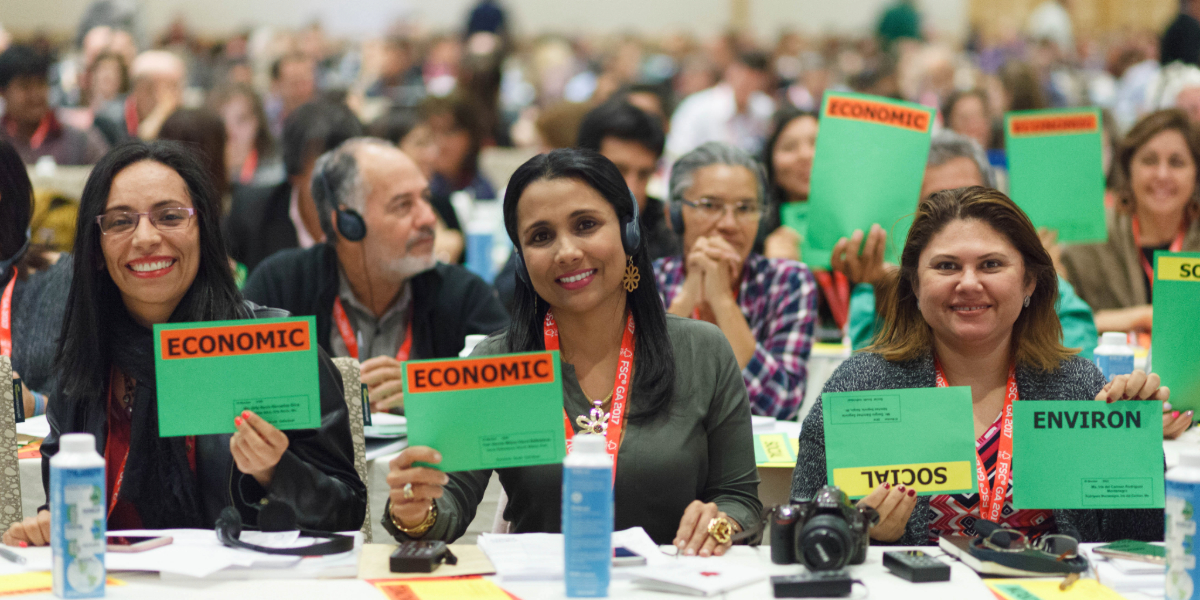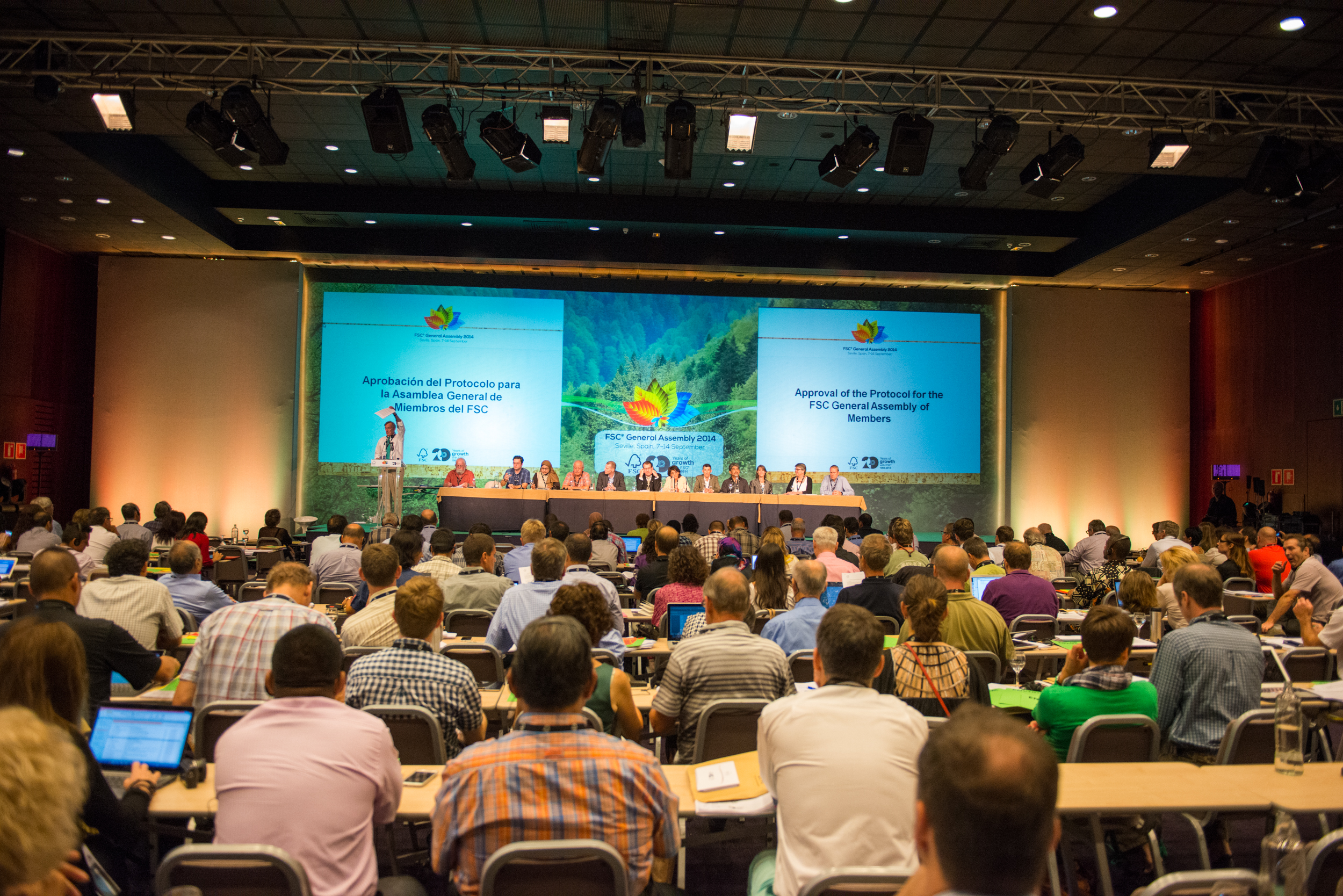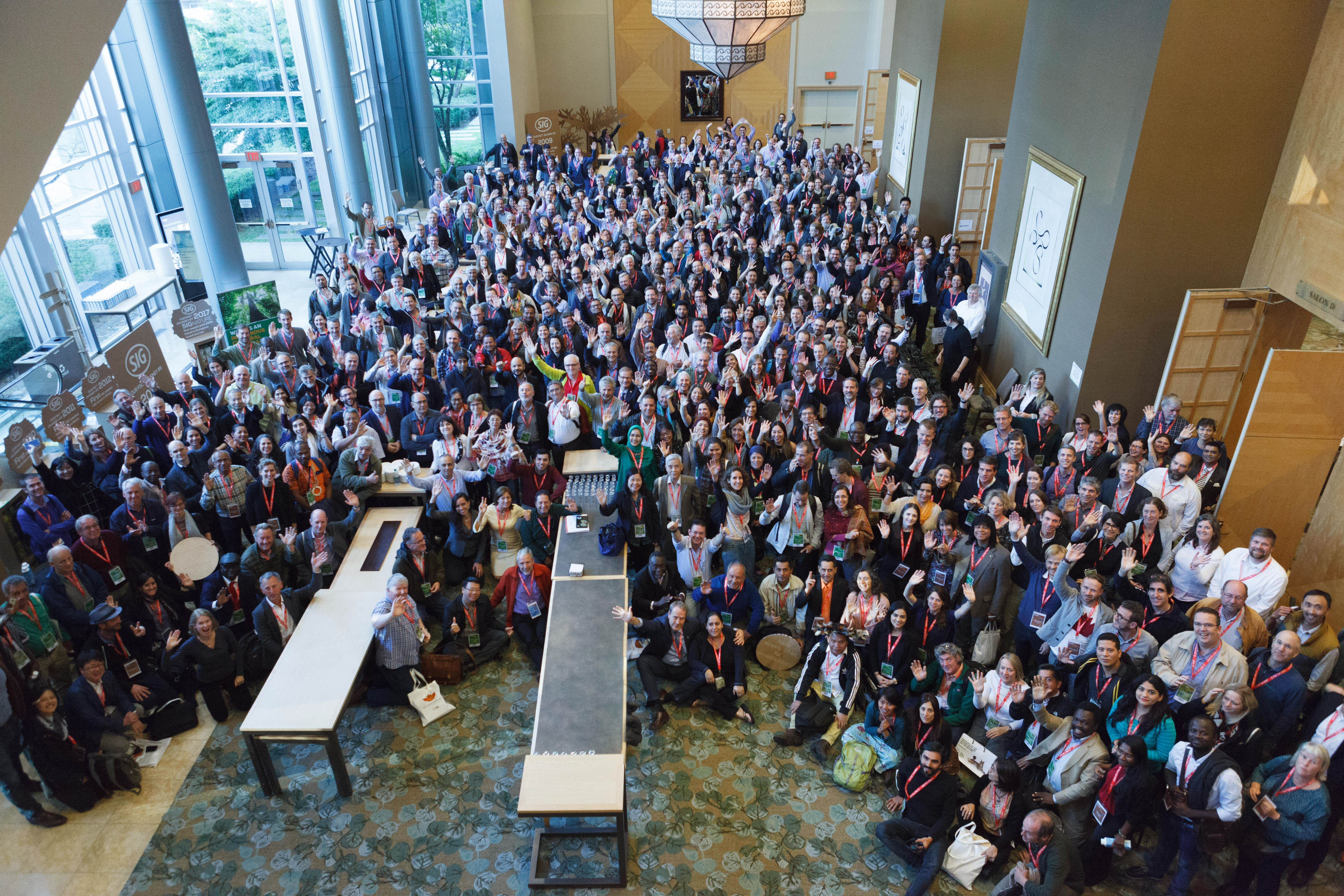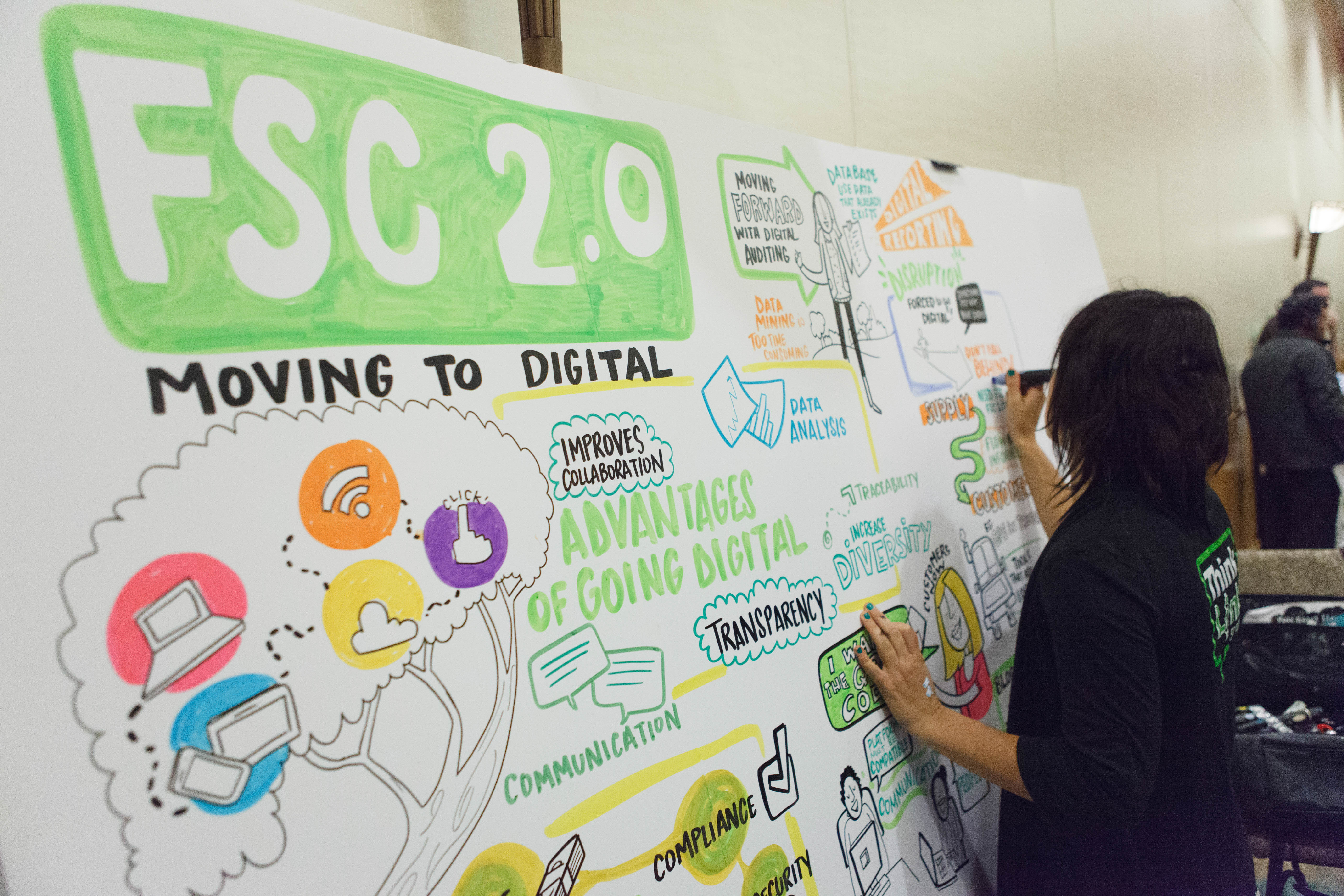Since 1996, FSC’s General Assembly (GA) has been the place where members come together to steer the system’s evolution. Each gathering reflects its time: the challenges on the ground, the debates across chambers, and the decisions that have shaped how FSC grows.
What may start as long discussions or debated motions in the assembly hall has, time and again, translated into real change in forests, markets, and communities. Taken together, the General Assemblies tell the story of FSC’s progress — a journey built motion by motion, and decision by decision. In this piece, we look back at four milestones that show how past General Assemblies have pushed FSC forward – strengthening its system and broadening its impact.
1. Growing participation and diversity

Participation in the General Assembly has steadily increased over the years. More than 90 members attended the first Assembly in 1996, which launched FSC as a credible certification system. By 2005, attendance had risen to 300, and by 2022, over 750 members took part. The upward trend continues, with more than 800 expected in Panama next October.
But beyond the figures, the FSC Secretariat has worked actively to strengthen diversity within the membership, ensuring fair representation from both North, and across all regions. As founding members retire, new efforts are preparing the next generation of leadership by welcoming younger members, women, and emerging forest advocates - broadening the range of perspectives and experiences that shape FSC’s future.
The motions adopted throughout the GA history also reflect this commitment to diversity. In 2011, Motion 19 led to the creation of the Permanent Indigenous Peoples’ Committee (PIPC), ensuring that Indigenous perspectives have a stronger voice within FSC. Composed of representatives from all global regions, the PIPC continues to advise the FSC International Board of Directors today, with a clear focus on Indigenous Peoples’ issues and priorities.
2. Innovation in format and location for greater inclusion
FSC’s commitment to inclusion extends not only to who participates, but also to how and where. After the first three general assemblies in Mexico, where FSC International was originally headquartered, the event began to travel across countries and continents to broaden accessibility. In 2005, it remained in the Americas as it took place in Manaus (Brazil), before moving on to South Africa, Malaysia, Spain, Canada, Indonesia, and now Panama. Each new location brings the event closer to the different member communities, ensuring more voices can be heard in person.
In 2021, the COVID-19 pandemic brought an unexpected challenge, and FSC responded by adapting the Assembly format. Postponed from 2020, the 2021/2022 edition introduced a hybrid model that combined online and in-person participation. This innovation not only safeguarded FSC’s democratic process but also expanded access, proving successful enough to become a permanent feature. In 2025, most sessions will once again be available online, alongside in-person debates.
Virtual participation also extends to preparatory activities and discussions ahead of the event. Together, these changes are making the General Assembly more accessible, more inclusive, and open to a wider range of voices worldwide.
3. A third language for FSC

At the last General Assembly, accessibility took on a new dimension; one that reshaped how members connect and participate in FSC. Since its founding, FSC had two official languages: English and Spanish – the latter reflecting Mexico, where FSC was born. At the 2022 General Assembly, members approved Motion 01 (2020) with more than 79% of the vote, officially adding French as FSC’s third language.
This change was championed by members from French-speaking countries, particularly in the Congo Basin, who had long advocated for the ability to engage more fully in FSC’s processes. With this adoption, FSC became the only international forest management certification scheme to recognize French as an official language - a major step toward more inclusive representation.
But linguistic inclusion goes beyond FSC’s official languages. The organization continues to expand language support wherever possible. On the Members Portal, the discussion area now offers multilingual translation options. Regional membership meetings in Latin America often include Portuguese interpretation, while FSC International hosts external webinars with interpretation into different languages such as Mandarin Chinese. Together, these efforts make it easier for members and stakeholders to engage meaningfully with FSC’s work and with one another, no matter what language they speak.
4. Landmark decisions shaping the future of forestry

The FSC General Assembly history is paved with examples of motions that have become a crucial part of what defines FSC as a trusted, leading system.
Motion 7 (2017), for instance, opened the door for degraded forests converted in the past to be restored and made eligible for FSC certification. Through restoration, it brings back ecological functions to degraded or previously cleared land, like replanting trees, reviving biodiversity, and protecting soil and water resources.
Motion 39 (2008) called for the development of FSC’s Policy for Association, establishing clear boundaries for who can be associated with FSC and who is not allowed to be part of the system. This motion led to stronger ethical safeguards, including the requirements for all certificate holders to comply with the ILO Core Conventions. Today, violations of illegal logging, destruction of High Conservation Values, and workers’ rights violations, which are defined by the ILO Declaration, are listed as part of five unacceptable activities in the FSC Policy for Association. Additionally, on 1 September 2021, the new Core Labour Requirements became mandatory for all FSC Chain of Custody certificate holders, ensuring better protection of workers across supply chains.
These landmarks decisions show how the General Assembly evolves in response to real challenges, making FSC stronger, more credible and more inclusive.
 At the heart of FSC is a system unlike any other: a three-chamber platform where social, environmental, and economic interests sit side by side, paired with a global certification system that turns those decisions into action. What makes this model powerful is not just the diversity of voices, but the ability to build consensus across them - proving that lasting change in forests can be driven by dialogue, not division.
At the heart of FSC is a system unlike any other: a three-chamber platform where social, environmental, and economic interests sit side by side, paired with a global certification system that turns those decisions into action. What makes this model powerful is not just the diversity of voices, but the ability to build consensus across them - proving that lasting change in forests can be driven by dialogue, not division.
Because the system depends on active members shaping the agenda, FSC remains the only democratic forum in global forestry where those closest to the ground have a direct hand in driving change. The General Assembly is where this spirit comes alive: where challenges are confronted, solutions are debated, and agreements forged that ripple outward into forests, markets, and communities worldwide.
FSC’s journey is rooted in progress — and every step forward has been shaped by its members. The General Assembly is more than an event; it is the heartbeat of FSC, and the place where its future continues to be written, together.


